Thar She Blows!
What a way to start our first full day at sea! Whales off the starboard bow and freshly baked cinnamon buns fresh from the oven! Before breakfast I raced up to the bridge when I heard there were whales. As soon as I got there I could see multiple blows far away on the horizon from at least a half dozen whales! After several distant breaches Dr. Kate Stafford and several of the observers decided that they were likely gray whales based on the shape of their heads.
Gray whales can weigh up to 40 tons, grow to a length of 45 feet and live for at least 40-60 years! The eastern Pacific gray whales travel from the Bering, Chukchi and Beaufort Seas to the southern Gulf of California and Baja. These whales typically spend the spring, summer and fall off the coast of Alaska and then begin their southward migration in October arriving off the coast of California and Mexico in the winter months. They need to leave the Arctic before the fall/winter sea ice forms and prevents them from surfacing to breath. The gray whale is classified as a baleen whale which acts like a sieve, to capture small sea animals. Gray whales were the whales that were trapped in the ice off the coast of Barrow Alaska in October of 1988 and made headlines in many newspapers around the world. Their story was made into a 2012 movie called The Big Miracle.
Here are a few photo’s from The Guide To Marine Mammals of Alaska by Kate Wynne and Illustrated by Pieter Folkens as part of a Sea Grant College Program with the University of Alaska Fairbanks. The observers, and visitors on the bridge can use this book to help them identify whales, especially ones like we saw this morning that are so far away. Every species of whale has specific characteristics.
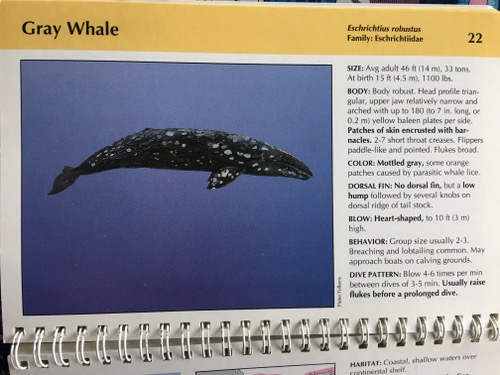

Who Wants A Cinnamon Bun?
After the whale sightings I had worked up an appetite but wasn’t sure I was ready for a cinnamon bun…however with a giant tray in front of me and a little encouragement from Dr. Steve Okkonen and Research Associate Phil Alatalo…I was all in!
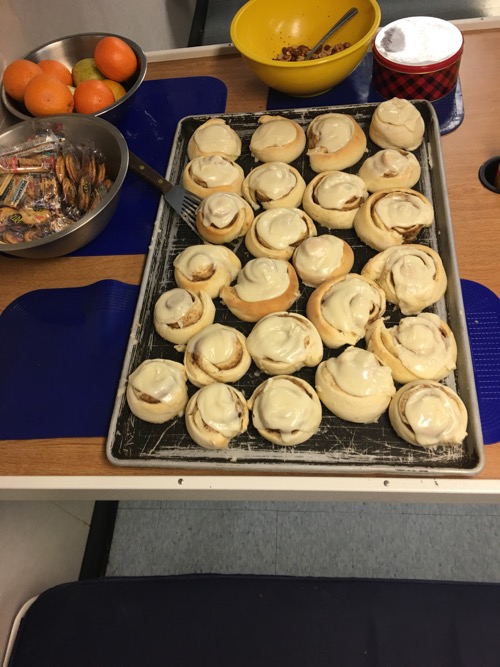

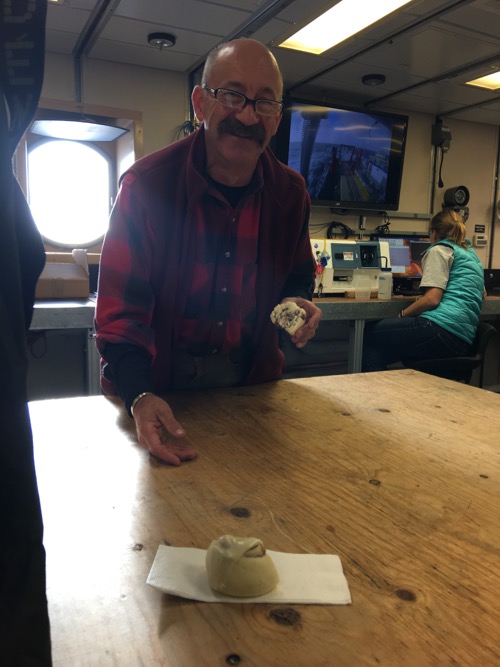

Where Are We? Steaming Through the Bering Strait and into the Chukchi Sea!
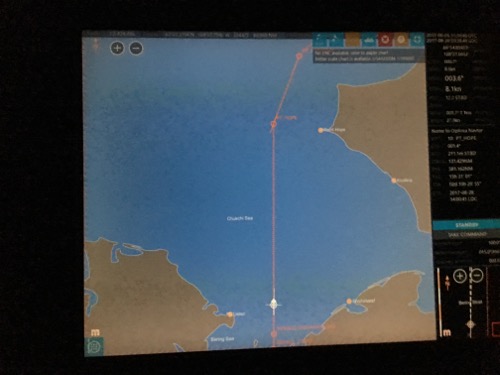
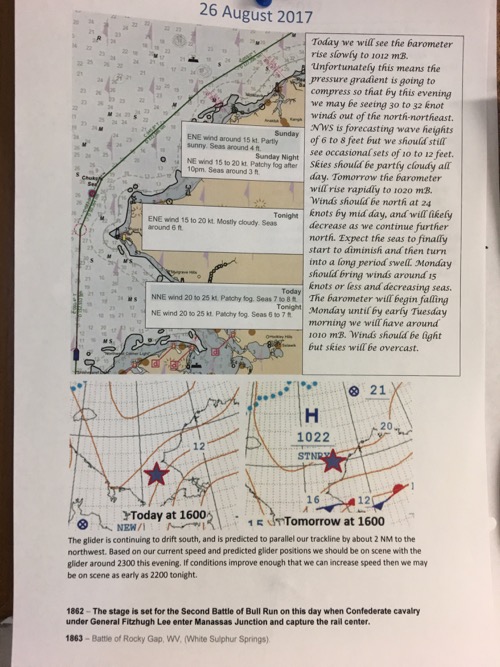
Polar Postcards!
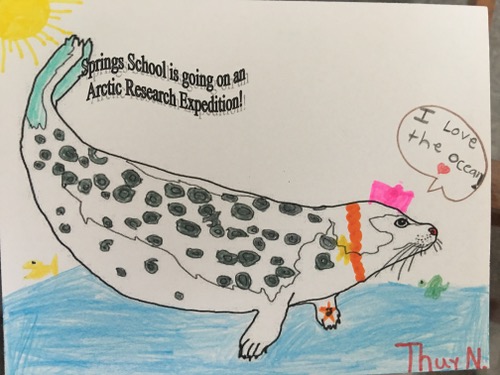
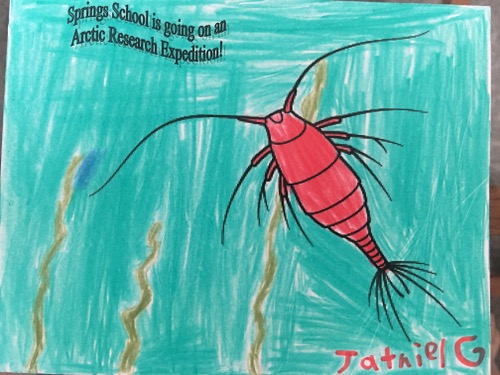
¡Ballena a la Vista!
¡Que manera de empezar el día en alta mar! ¡Ballenas a estribor y panecillos de canela recién salidos del horno! Antes del desayuno corrí hasta el puente cuando escuché que había ballenas. ¡Apenas llegue vi muchos resoplos lejos en el horizonte de por lo menos media docena de ballenas! Después de varias salidas a la superficie la dra. Kate Stafford y varios observadores decidieron que basado en la forma de sus cabezas muy probable eran ballenas grises.
¡Ballenas grises pueden pesar hasta 40 toneladas, crecer hasta 45 pies, y vivir por lo menos 40 – 60 años! Las ballenas grises del pacifico oeste viajan de los mares de Bering, Chukchi, y Beauford a los golfos del sur de California y Baja. Estas ballenas típicamente pasan la primavera, verano, y otoño por las costas de Alaska y después empiezan su migración hacia el sur en octubre llegando por las costas de California y México durante los meses de invierno. Necesitan irse el Ártico en otoño/invierno antes de que se forme el hielo y les impide subir a la superficie para respirar. La ballena gris es clasificada como una ballena barbada; las barbas son como un filtro, para capturar a animales marinos pequeños. Ballenas grises fueron las ballenas atrapadas en el hielo por las costas de Barrow Alaska en octubre de 1988 y llego a los titulares de muchos periódicos por todo el mundo. Su historia fue hecha una película en 2012 llamada El Gran Milagro.
Aquí algunas fotos de la guía de mamíferos marinos de Alaska d Kate Wynne e ilustrado por Pieter Folkens como parte del Sea Grant College Program con la Universidad de Alaska Fairbanks. Los observadores, y visitantes en el puente pueden usar este libro para ayudarles a identificar ballenas, especialmente como las que vimos muy lejos esta madrugada. Cada especie de ballena tiene características específicas.


¿Quién quiere un panecillo de canela?
Después de ver las ballenas tenía un apetito, pero no estaba segura si estaba lista para un panecillo de canela … sin embargo con una bandeja gigantesca en frente de mí y un poco de aliento del Dr, Steve Okkonen y asistente de investigación Phil Alatalo … ¡me lance!




¿Dónde estamos? ¡A todo vapor atravesando el Mar de Bering rumbo al Mar de Chukchi!

Lo que llamo “informaciones diarias” o “las noticias R/V Sikuliaq del día” son puestas todos los días en el comedor del barco. Incluye el tiempo, información sobre los eventos de investigación del día y datos curiosos. ¡Revisa lo que el día de hoy tuvo reservado para nosotros en el Daily Briefing de hoy!

¡Postales polares!




Comments